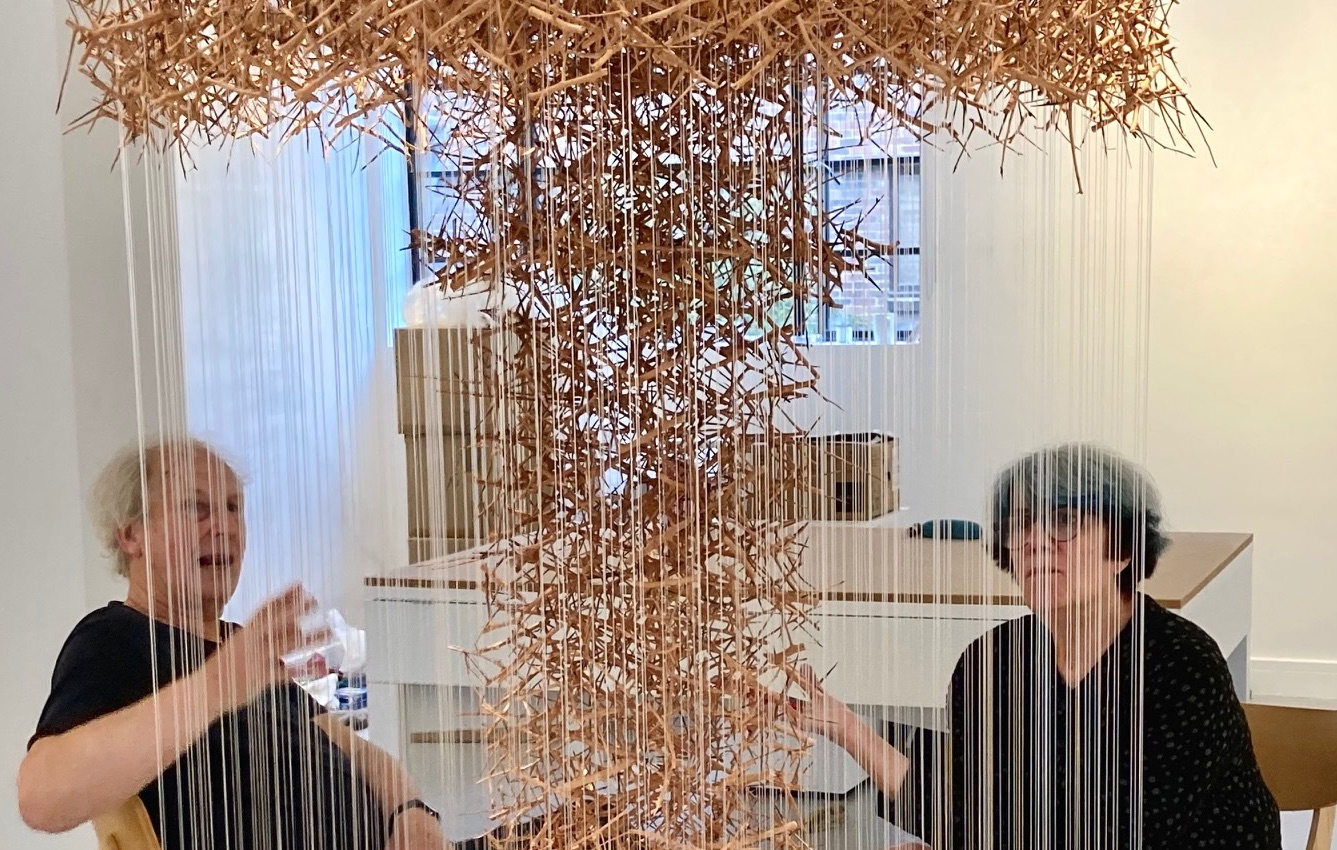An interview with Chris Drury
By Veronica Sekules, edited by Beatrice Bray
An interview with Chris Drury, an artist with an enormous international reputation and long experience making art in, with and about nature. Chris is used to travelling a great deal, responding to diverse requests for exhibitions, collaborations, installations and site specific works outside.
He describes himself as an environmental artist, making site specific nature based sculpture, or land art. His work connects different phenomena in the world, opposites and contrasts, specifically between nature and culture, inner and outer space and microcosm and macrocosm. Often he collaborates with scientists and technicians from a broad spectrum of disciplines and is prepared to use whatever visual means, technologies and materials best suit the situation.
Recent projects include a residency at The Nirox Foundation in The Cradle of Humankind, South Africa, working with paleontologists, geologists and anthropologists, a British Antarctic Survey residency in Antarctica, a work for the Australian National University in Canberra and an exhibition about place, ecology and politics at The Nevada Museum of Art called Mushrooms|Clouds.
Nature’s Mysterious Networks
For this interview, Chris Drury (CD) and Veronica Sekules (VS) were seated in October 2021 in GroundWork Gallery talking about his works as he was installing them for Nature’s Mysterious Networks, Mushrooms Mycelia and Yeasts.
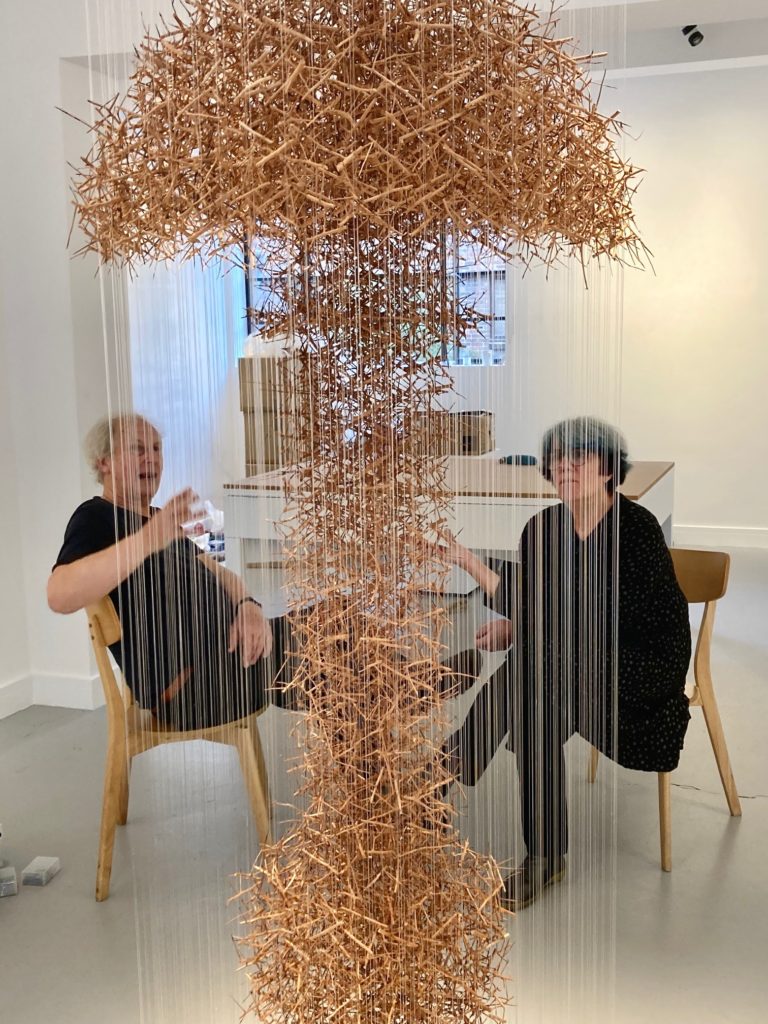
Cloud of Thorns
V. S. Can you talk about Cloud of Thorns? Can you tell me when you made it? What started you thinking about it?
C. D. I made it in 2018 when a gallery in Switzerland asked me to do a show and have an installation inside. So I kind of wanted to do a thorn one. I’ve done various different ones in different places in the world of some different sizes. This one was sized for a room and I have a lot of blackthorn near where I live so that’s what I used. I wanted it to be white but if you boil blackthorn the bark makes it go brown. It’s slowly going this rather beautiful honey colour.
V. S. So you boiled the thorn?
C. D. Yes. Three thousand and a hundred pieces! Boiled for a few minutes the with a wire brush the bark comes off.
V. S. So this was just to prepare them and strip them and was it to preserve them?
C. D. I would do a whole long twig and then cut them. I do these very obsessive pieces of work which I quite like doing – repetitive tasks – and then it was a question of working out the scale and how it was. I quite wanted it to be floating rather than attached to the ground as a mushroom cloud.
V.S. And was that a deliberate reference to nuclear power?
C. D. I think all my mushroom works have that relationship with life and death because mushrooms break down dead matter into the soil, from which all things grow. So it’s life, death and regeneration. They all have this death element that’s within them.
V.S. So what do you feel the thorns add to that?
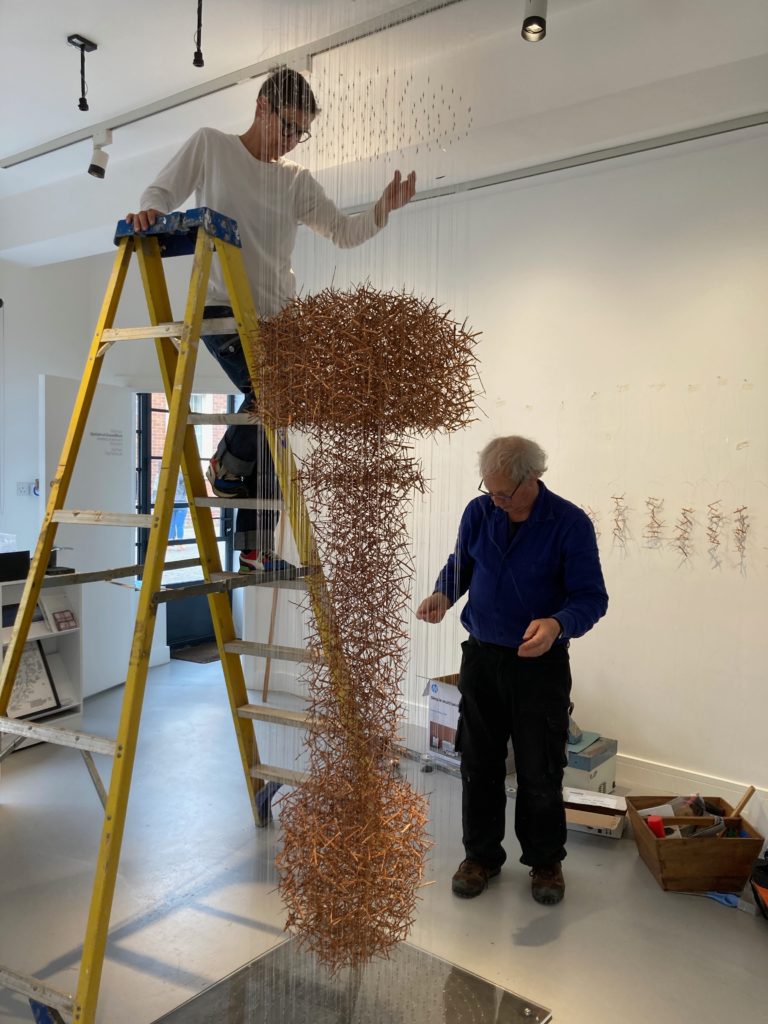
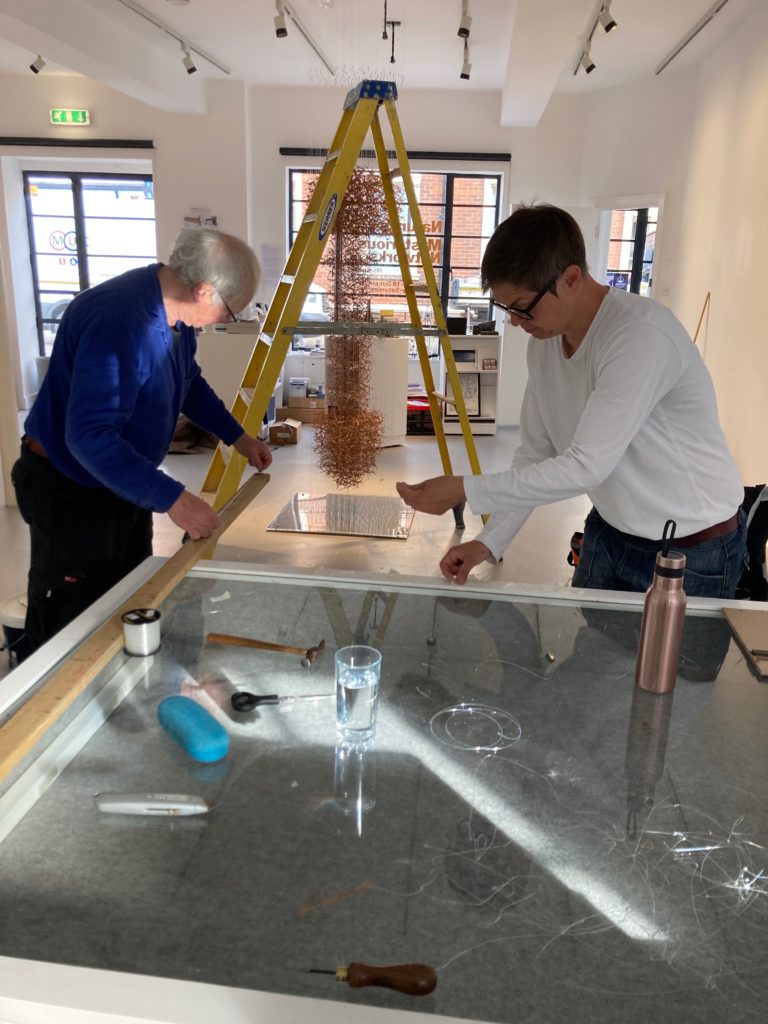
C. D. They are really spiky and you shouldn’t get pricked by blackthorn because it’s poisonous and it infects your skin so I had to be quite careful. Something like that can hurt you. I like the idea of that. Whereas other works I have made have them from slices of fungi but bigger ones.
I did make one out of sage brush from Nevada and the woman the scientist I was working with out on the test site said that you should be using something that grows on the test site. So she sent me these incredibly beautiful thorns, in two varieties of them. One is slightly whiter or greyer than the other and I made one slightly smaller than this in a perspex box which is hell to move around. It’s very heavy. She sent them by post and I made that one there, so that is the other thorn one. I do like the way that plants have thorns to protect themselves from being eaten. I like all that. It’s a tree. It’s a shrub so underneath it will have a relationship my ceiling. They will talk to one another.
V.S. It’s also semi-transparent. You see through the strings and then through the more chaotic thorns and yet the outline forms a very considered shape.
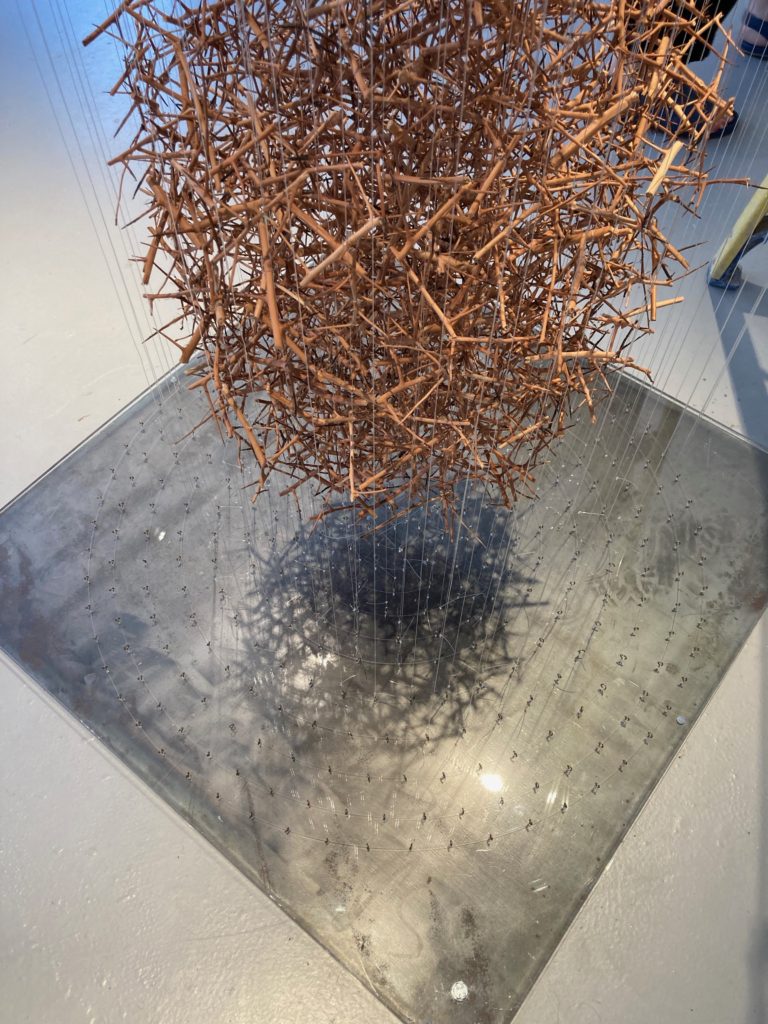
C. D. It’s geometric but then the nature of the material throws it into chaos which I love but it is one of the most poisonous mushrooms. Its name is destroying angel. I love that name because mushrooms when you see them are incredibly beautiful and a destroying angel is pure white and it looks wonderful but you know if you ate it, that would be it. It’s the edginess about that that I really enjoy.
V.S. There is an inevitable resonance with the crown of thorns. Is that intentional?
C. D. Biblically yes. I don’t know quite where. I am not religious or anything. I think that there is an element of that in it.
V.S. It gives it many layers of references.
C. D. That’s the point. You make a work that in ambivalent in many directions and its title is ambivalent and so it communicates on many levels. Whoever engages with it.
V.S. And the fact that you have to remake it at every site. What does that bring to you as an artist?
C. D. Well it’s always different wherever you do it and actually so long as you know what the height is floor to ceiling. At the top there are a number of tiny little fishing swivels so I alter it from there to the ceiling. I alter the length. I cut it off which takes a day. So it’s not a huge problem and there is a way of packing them into the box and they are all wrapped around a piece of card which is numbered, and the number refers to the rings that there are on the ceiling and the floor. There are twelve rings so number one is the central one which has the most pieces on it, and everything else changes.
V.S. Is that another aspect of the symbolism? The numbers involved?
C. D. No, I haven’t considered it. I have made them much larger than this and there’s been a lot more rings. I don’t think that there’s a symbolism in the numbers although maybe someone will find it.
V.S. Do you enjoy people’s responses if they imagine things that you did not necessarily intend?
C. D. The thing has to communicate once it’s up on its own level and the information is in its title and from there on its a communication.
V.S. It’s exquisitely beautiful and special and it just looks lovely here.
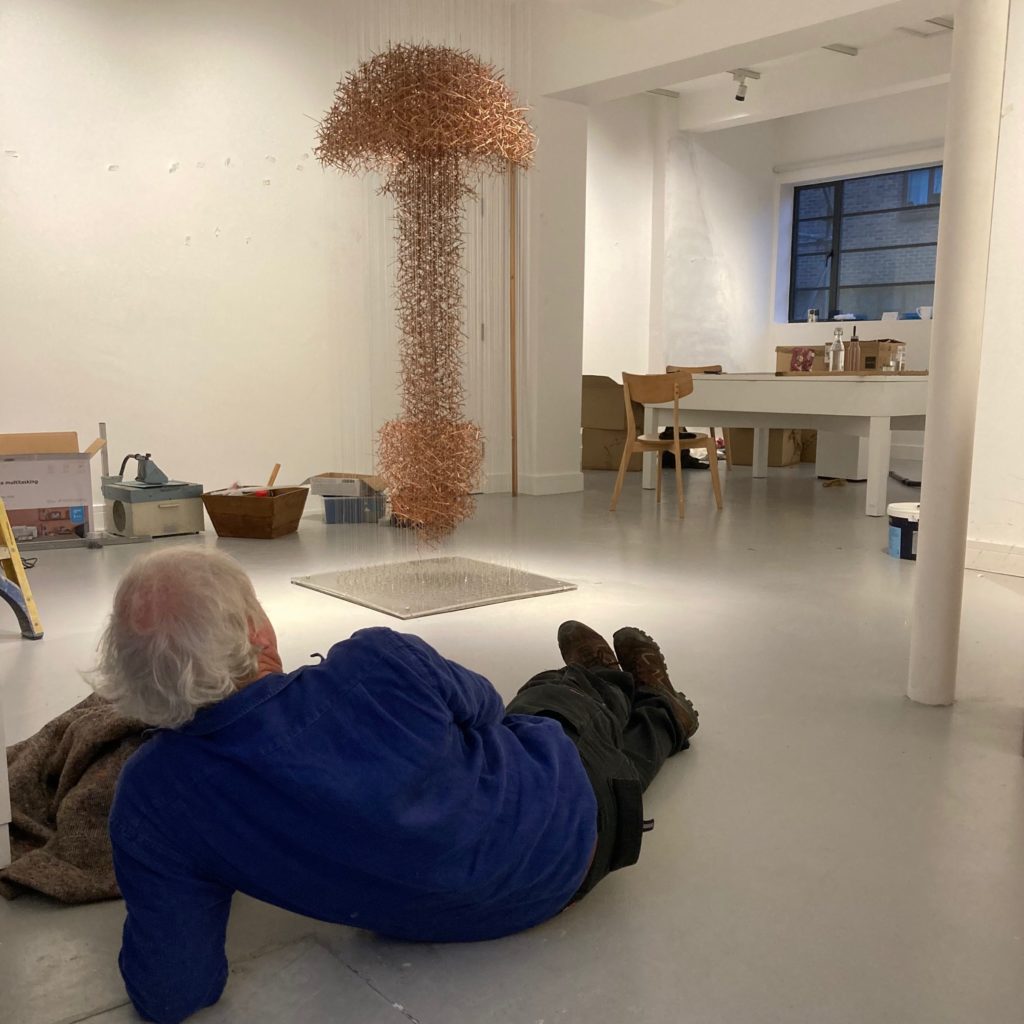
C. D. I’ve never tired of making these actually and I’ve made quite a few now. I don’t want to alter the shape and I don’t want to have fishing wires stringing something in another shape. I like the mushroom. I am happy for it to communicate on many levels.
V.S. I guess it is equivalent to a musician singing a song again and again.
C. D. I wish to make one out of reindeer moss which is this beautiful colour. It is round so you don’t need so many of them and I am trying to work out how I am going to attach them. I am going to Norway next year to the highest village in northern Europe. It is inhabited all year round. An artist who is a friend of mine has a studio there. He’s organising this. It is right on edge of a national park next to the highest mountain in Norway.
Spore Grid
V.S. Can we move on to talk about Spore Grid?
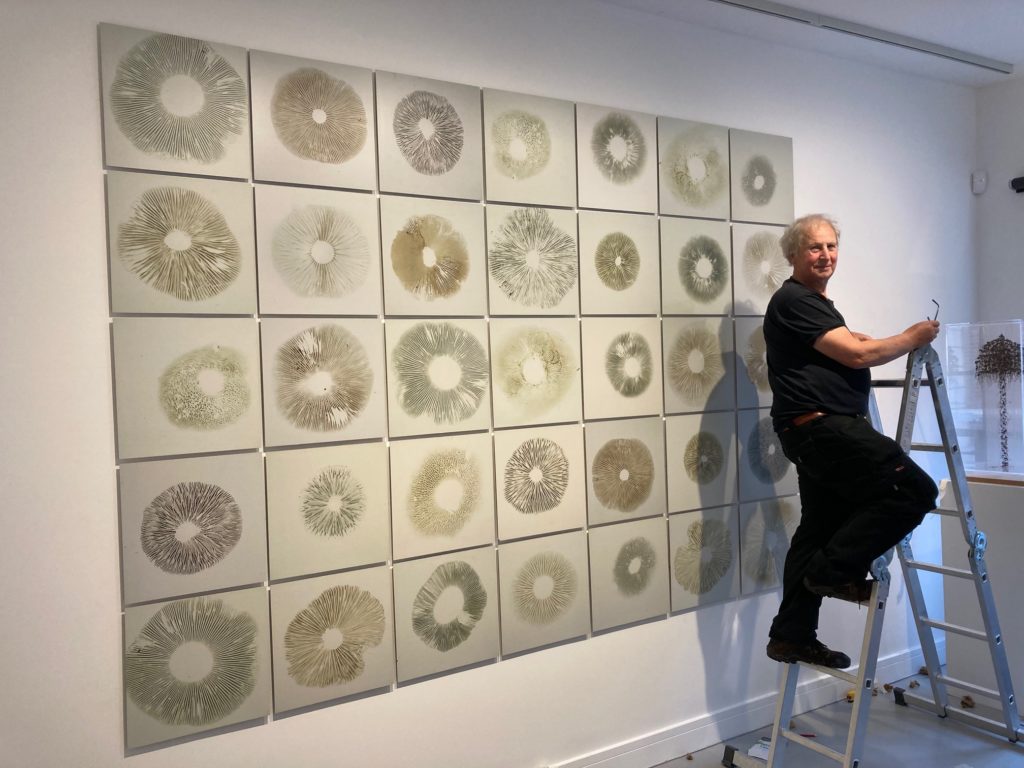
C. D. It’s quite old this piece. I was just interested in looking at very very small fungi – all different varieties – and the original mushroom was no bigger than 1.5 centimetres. I got some 35 mm glass slides which have nothing in them so you can take two bits of glass apart and put the mushroom cap onto the glass and leave it for six hours or overnight. It drops its spoors. And you just sandwich them with the other bit of glass and put it back into the frame and you can put them into a photographic enlarger.
The light is put through spores onto photographic paper and produces these images. I have 35 of them. Some of them are reproduced twice. I have digitally scanned all of these so they can be digitally printed. That is crisper and whiter. Different – not the same. I really like these original ones because of the fact that these are light through spores and so the colour is the colour of the spoor and there is one on the right that is wet.
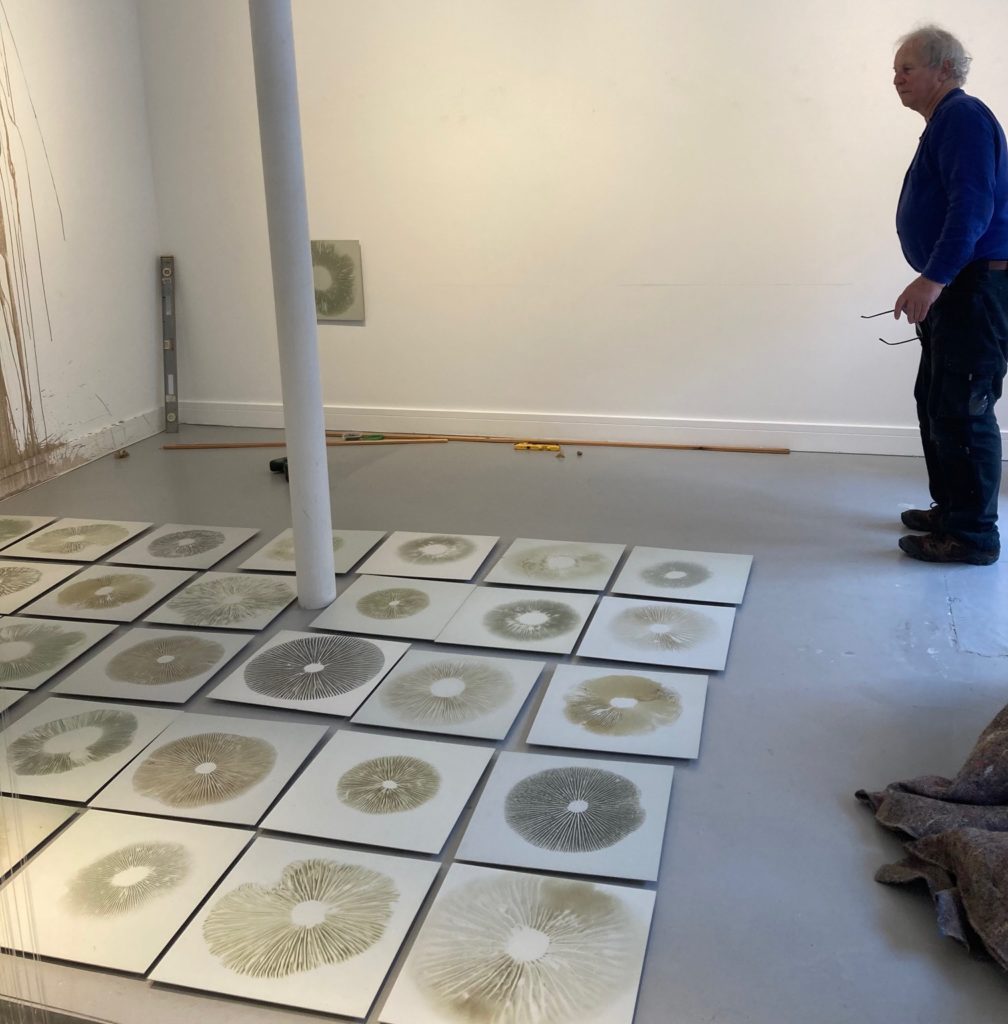
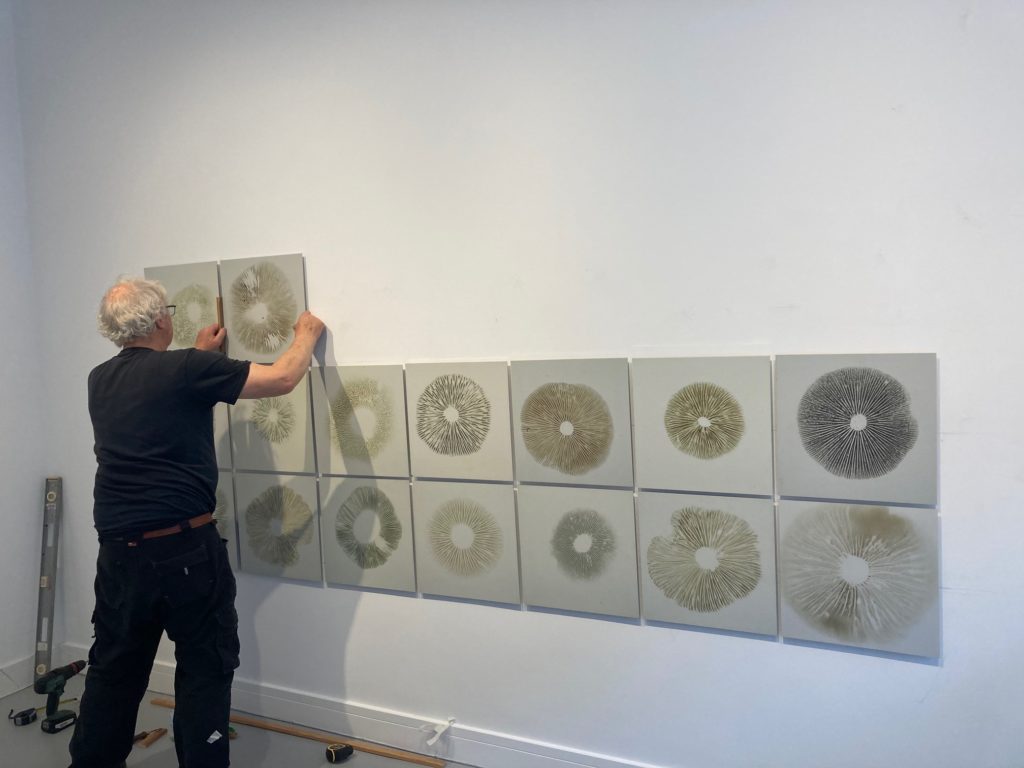
V.S. I wonder if a real mushroom expert would be able to identify them.
C. D. I think maybe they would. I really like spore prints because where an insect has eaten it you get a hole in it. When it’s somewhat away from the surface it goes blurred. There is something very photographic about spores falling onto a surface.
Cloud Nine
V.S. Perhaps we can talk about Cloud Nine.
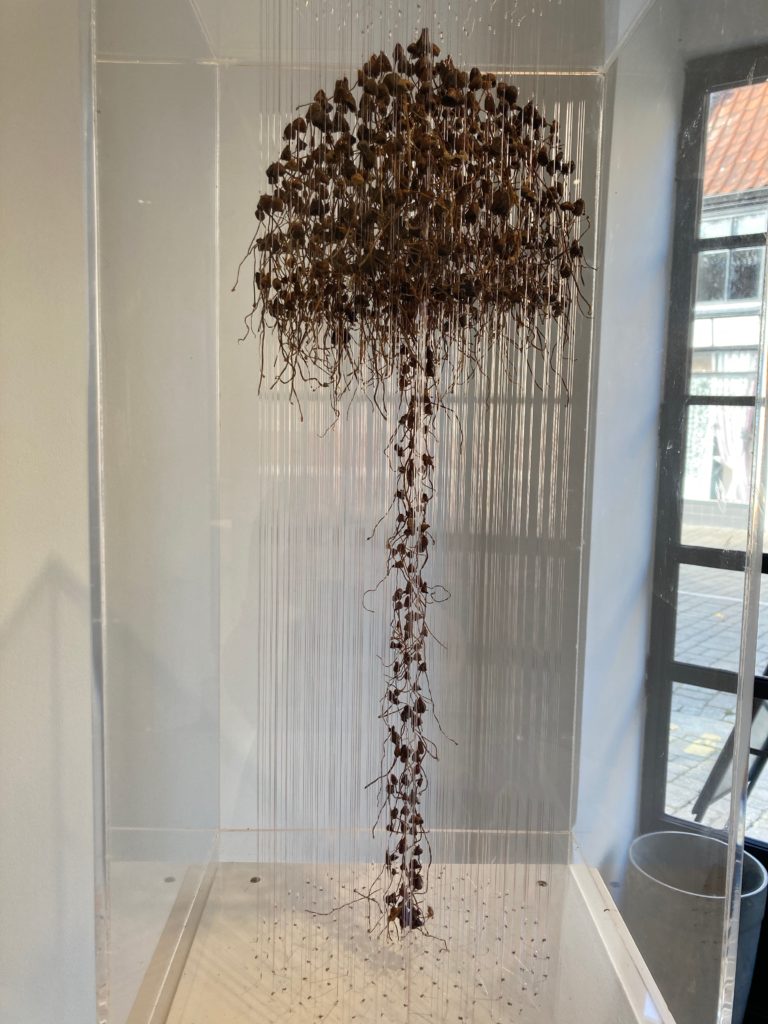
C. D. I couldn’t resist making Cloud Nine – making magic mushrooms out of magic mushrooms. That’s what this one is. It took two years to make because there is about a two week window in October when they come up. I know places where they tend to come up regularly but you have to find the window in time. I couldn’t find enough of them so I had to leave them there for another year and collect some more. They are all dried and then dipped in sealer so there is no way that I could be imprisoned for that because no one could chew one of those. I actually sent one of those to a lab to see if they could find an active ingredient and they couldn’t. They are in an acrylic sealer so I am covered as it were.
V.S. So we won’t be done for having grade one drugs.
C. D. No, you shouldn’t be. I like the way they look like sperms with their little tails. It’s called Cloud Nine because it has all of that. I love the way mushrooms feed you, kill you, alter your mind and communicate with trees. All those different things. The psychedelic aspect is extraordinary. I wouldn’t recommend that anybody goes and does it because if you’re vulnerable mentally then I wouldn’t touch it. It does make you laugh if you’re alright and it makes you see the stupidity of life. It expands your mind. There is the stoned ape theory. Early man must have been eating stuff and that is what clicked in their mind and produced language.
V.S. So analogous to the idea of communication between mushrooms and plants.
Life in the Field of Death
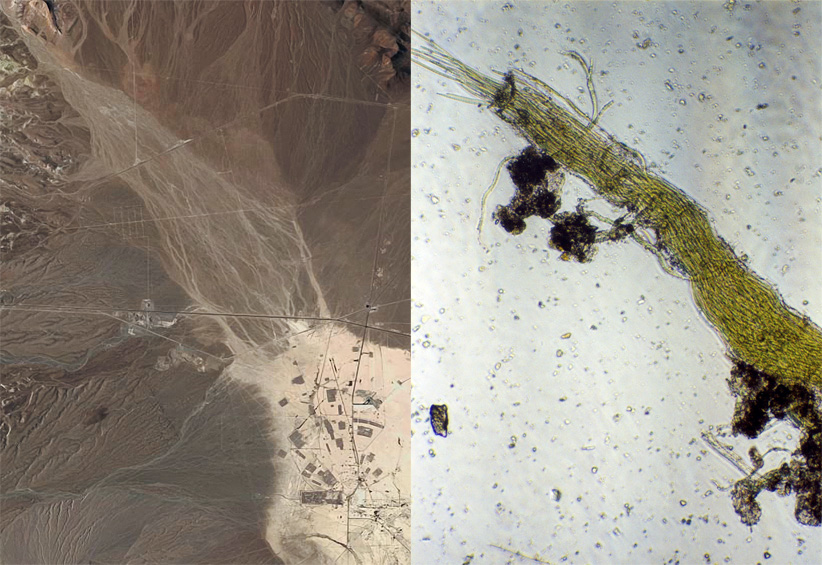
C. D. There has been this sudden surge of interest in fungi. It is extraordinary the material they discovered about trees and fungi and the role that fungi have in that communication. I’ve go a work here made by the scientist working on the test site and I asked her what’s growing on the soil of the test site and she came up with this image of this bacteria.
It is the oldest plant that discovered how to turn turned CO2 into oxygen so everything that we see on earth is down to that plant. Yet it can withstand nuclear blasts. It’s just amazing. She produced a microscope image of that bacteria and an image from space of that bacteria. I’ve seen fossilised versions of that plant in South Africa. In Australia I’ve seen a living version of that fossil. They are all related. Moss in the soil and fungi. It’s a fascinating thing which we don’t necessarily see and our agriculture is destroying it.

